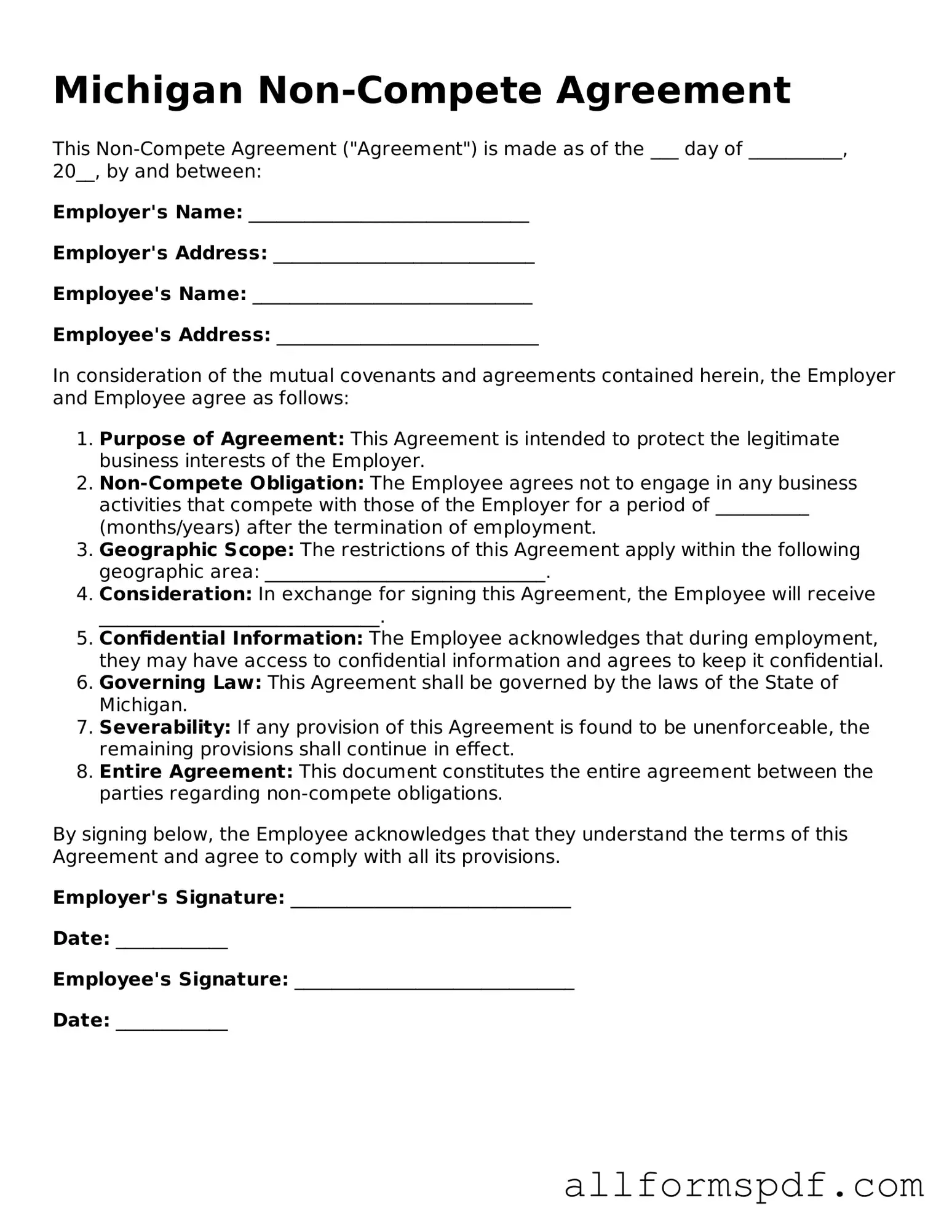Filling out the Michigan Non-compete Agreement form can be a straightforward process, yet many individuals make common mistakes that can lead to complications. Understanding these pitfalls can help ensure that the agreement is completed correctly and serves its intended purpose.
One frequent error is failing to read the entire document before signing. Many people rush through the form, overlooking critical sections that detail their rights and obligations. It is essential to take the time to understand each clause, as this knowledge can prevent future disputes.
Another common mistake is not providing accurate information. Individuals may accidentally list incorrect job titles, dates, or other personal details. Such inaccuracies can render the agreement unenforceable, so double-checking all information is crucial.
People often neglect to consider the scope of the non-compete clause. A vague or overly broad restriction can be problematic. It is important to ensure that the terms are reasonable in terms of geographic area and duration, as overly restrictive agreements may not hold up in court.
Additionally, failing to consult with a legal professional is a significant oversight. While it might seem unnecessary, a lawyer can provide valuable insights and help clarify any confusing language. Seeking legal advice can prevent misunderstandings and ensure that the agreement is fair and enforceable.
Another mistake is not discussing the agreement with the employer before signing. Open communication can lead to a better understanding of the terms and expectations. This dialogue can also provide an opportunity to negotiate terms that may be too restrictive or unclear.
People sometimes forget to keep a copy of the signed agreement for their records. Having a personal copy is important for future reference, especially if disputes arise later. It is advisable to store this document in a safe place.
In some cases, individuals may sign the agreement under pressure. This can lead to feelings of regret or resentment later on. Taking the time to consider the implications of signing a non-compete agreement is vital for making an informed decision.
Lastly, individuals often overlook the importance of understanding the consequences of breaching the agreement. Familiarizing oneself with potential penalties can help avoid unintended violations. Knowledge of these repercussions can lead to more cautious behavior in professional settings.
By being aware of these common mistakes, individuals can navigate the Michigan Non-compete Agreement form with greater confidence and clarity. Careful attention to detail and open communication are key to ensuring that the agreement serves its intended purpose effectively.
